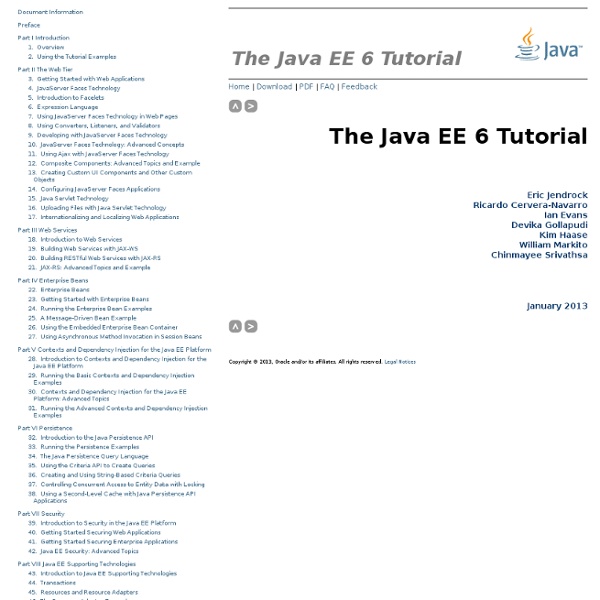



Martin Krasser's Blog An Eclipse / GlassFish / Java EE 6 Tutorial » Programming For whatever reason my programming blog got lost in binary space. Because of the popularity of this page, I’ve restored in from a backup. I probably won’t restore the rest of the site though. Version 1.4, last updated May 23, 2011 – 11:10 The content of this tutorial is still relevant, but you may also consider my new open source Azzyzt JEE Tools, a set of Eclipse plugins that greatly simplify the process of creating a Java Enterprise application using the patterns outlined in this tutorial. In “4 – Equipment” I have committed myself to using Eclipse and the Java Enterprise Edition as my tools, while in “5 – Patterns And Languages” I’ve declared my high-level goals for implementing a next step of design pattern-based tools. I am no expert in this field, some important things may be missing, so just take the following as a set of things that work for me. Applicability This is a tutorial about using Eclipse and the GlassFish v3 Java application server to implement Java EE 6 applications. or
Coreservlets.com: Java, JSF 2.0, Ajax, jQuery, Spring, Hibernate, REST, Hadoop, and GWT Training, Tutorials, Consulting, Books, & Resources Learn Code The Hard Way -- Books And Courses To Learn To Code ArtRoulette.fr Developing an Enterprise Application for Oracle WebLogic Server This tutorial demonstrates how to use the IDE to create a web application that uses JavaServer Faces (JSF) 2.x and the Java Persistence API (JPA) 2.0 and then deploy the application to the Oracle WebLogic Server. In this tutorial you will register the WebLogic Server with the IDE, and then use wizards in the IDE to create a JDBC resource and entity and bean classes. You will then use the IDE to deploy the application to the server and register the new datasource. Contents To follow this tutorial, you need the following software and resources. Notes. This project uses the sample database that is available for either the MySQL or JavaDB database servers. Registering the Oracle WebLogic Server In this tutorial you will deploy a web application to the Oracle WebLogic Server. Downloading and Installing the Server Download the installer from the Oracle WebLogic Server Downloads page. Registering the Server with the IDE Open the Services window. Opening the Admin Console Note. Note. <? Note. Note. <?
Java Tutorial Blog ceriscope